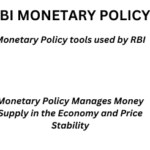Global Greenhouse Gas Monitoring Infrastructure: Basics Explained

The UN’s World Meteorological Organization (WMO) Executive Council has endorsed plans for a new Global Greenhouse Gas Monitoring Infrastructure to fill critical information gaps and support action to reduce heat-trapping gases. According to the resolution, WMO would coordinate efforts within a collaborative international framework to leverage all existing greenhouse gas monitoring capabilities – space-based and surface-based observing systems, all relevant modelling and data assimilation capabilities – in an integrated, operational framework.
It aims to provide better ways of measuring planet-warming pollution and help inform policy choices. The GHG monitoring infrastructure will help improve understanding of the carbon cycle.
LEARNING FROM HOME/ WITHOUT CLASSES/ BASICS
Carbon Cycle
Carbon is transferred between the ocean, atmosphere, soil, and living things over time scales of hours to centuries. For example, photosynthesizing plants on land remove carbon dioxide directly from the atmosphere, and those carbon atoms become part of the structure of the plants. As plants are eaten by herbivores and herbivores are eaten by carnivores, carbon moves up the food web. Meanwhile, the respiration of plants, animals, and microbes returns carbon to the atmosphere as carbon dioxide (CO2). When organisms die and decay carbon also returns to the atmosphere, or is integrated into soil along with some of their waste. The combustion of biomass during wildfires also release large amounts of carbon stored in plants back into the atmosphere.
Human activity, especially the burning of fossil fuels, has dramatically increased the exchange of carbon from the ground back into the atmosphere and oceans. This return of carbon back into atmosphere as carbon dioxide is occurring at a rate that is hundreds to thousands of times faster than it took to bury it, and much faster than it can be removed by the carbon cycle (for example, by weathering). Thus, the carbon dioxide released from the burning of fossil fuels is accumulating in the atmosphere, increasing average temperatures through the greenhouse effect, as well as dissolving in the ocean, causing ocean acidification.
The World Meteorological Organization (WMO) is an intergovernmental organization with a membership of 193 Member States and Territories. Established by the ratification of the WMO Convention on 23 March 1950, WMO became the specialised agency of the United Nations for meteorology (weather and climate), operational hydrology, and related geophysical sciences a year later. The Secretariat, headquartered in Geneva, is headed by the Secretary-General. Its supreme body is the World Meteorological Congress.
ANTHROPOGENIC CLIMATE CHANGE is a change caused by human
activity.
CLIMATE CHANGE: Climate Change refers to any change in
climate over time whether due to natural variability or as a result of human activity.
Global warming is the long-term heating of Earth’s climate system observed since the pre-industrial period (between 1850 and 1900) due to human activities, primarily fossil fuel burning, which increases heat-trapping greenhouse gas levels in Earth’s atmosphere. The term is frequently used interchangeably with the term climate change, though the latter refers to both human- and naturally-produced warming and the effects it has on our planet.
Greenhouse gases allow sunlight (shortwave radiation) to pass through the atmosphere freely, where it is then partially absorbed by the surface of the Earth. Greenhouse gases are able to trap heat (longwave radiation) in the atmosphere, keeping the Earth’s surface warmer than it would be if they were not present. These gases are the fundamental cause of the greenhouse effect. Increases in the number of greenhouse gases in the atmosphere enhances the greenhouse effect which is creating global warming and consequently climate change.
So the more greenhouse gases you have in the atmosphere, the more heat stays on Earth. The principal forcing greenhouse gases are: Carbon dioxide (CO2); Methane (CH4); Nitrous oxide (N2O); Fluorinated gases
The Paris Agreement is an agreement within the United Nations Framework Convention on Climate Change (UNFCCC) dealing with greenhouse gas emissions, mitigation and adaptation. The Paris agreement was signed in 2015 by 195 countries. The Paris Agreement entered into force on 4 November 2016. the Paris Agreement mandates all countries to take action to minimise the impact of climate change as per their voluntary commitments and individual capacity.
It sets a global goal of keeping global average temperatures from rising 2°C
(compared to temperatures of pre-Industrial Revolution) by the end of the
century.
Adaptation can be understood as the process of adjusting to the current and future effects of climate change. ‘Adaptation to climate change’ refers to the vast range of actions societies can take to reduce the adverse impacts of global warming on the environment, society, public health, the economy and more. Climate adaptation includes measures such as developing and rolling out new varieties of drought-resistant crops, designing better flood-defence infrastructure to protect coastal cities or riverine communities, improving early warning systems for climate-induced disasters, and restoring ecosystems that act as buffers against extreme weather.
Mitigation means making the impacts of climate change less severe by preventing or reducing the emission of greenhouse gases (GHG) into the atmosphere. Mitigation measures include deploying renewable energy at scale, replacing internal combustion engine cars and motorbikes with electric vehicles, and improving the health of the planet’s forests. These can help slow down the growth, or in certain cases even reduce the concentration, of greenhouse gases in the atmosphere.




0 Comments